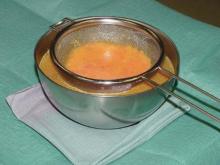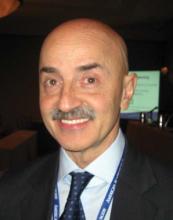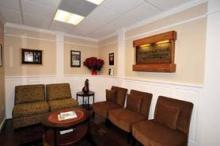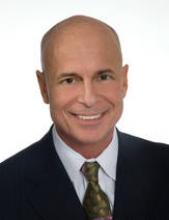User login
Fat Transplantation's Mechanism of Action Remains Elusive
LAS VEGAS – Even though transplantation of fat harvested by cannulas has been performed for almost 3 decades, its precise mechanism of action remains elusive.
"One must admit that so far lipostructuring still has to do more with art than with science," Dr. Giovanni Botti said at the annual meeting of the American Academy of Cosmetic Surgery. In many respects, "we haven’t yet come out of the Middle Ages of subjective and empirical opinions."
Despite the relative lack of objective data to support its use, Dr. Botti, a plastic surgeon based in Lake Garda, Italy, has been performing fat transplantation for 25 years. In his opinion, the procedure "can certainly be considered a therapy of first choice in the treatment of soft tissue hypotrophy, as well as for the correction of tropism disorders such as radionecrosis and burns. It is not clear, though, how to obtain consistently positive and long-lasting results."
This begs the question, he continued: If you were to biopsy the area where fat had been injected 1 year earlier, would you be looking at the same fat that was injected, or is it a brand new pad "rebuilt" by the stem cells and modulated by the growing factors present in the grafted material? If the latter hypothesis is true, "how can the stem cells in the grafted fat promote the growth of exactly the wished for amount of fat?" Dr. Botti said. "Why should it take the desired shape? Could the mass on injected tissue serve as a temporary matrix, used by stem cells as a pattern to form their ‘fat net’?"
He speculated that the fat found after 1 year could be composed of fat that was originally injected, as well as stem cells. The stem cells "promote angiogenesis, which would help adipocytes to survive. We can nowadays only make hypotheses that need to be confirmed by further research."
In the meantime, what really matters is achieving the maximum taking rate during fat transplantation, he said. "Very satisfying" results can be achieved in volume restoration and soft tissue regeneration.
The best treatment for the harvested fat prior to injection remains a matter of debate. Recent research suggests that adding stem cells, insulin, the coenzyme Q-10, and platelet rich plasma may favor survival rates, "though no one has yet been able to provide any evidence," he said. "For sure, stem cells can enhance the local blood supply and release growth factors to help the healing process. Thus, theoretically, the graft survival rate is improved. For this reason nowadays regenerative cell enriched fat is increasingly used within various indications."
Beginning in 1985, Dr. Botti treated aspirated fat by "washing," decantation, and strainer filtration. Fifteen years later he switched to using a centrifuge, but after about 1 year of using it, "I realized I wasn’t getting any better results than by means of filtration," he said. "I therefore went back to my previous technique."
In 2007, Dr. Botti and his associates carried out a study of 32 patients undergoing fat transplantation in the face. They injected one side of the face with centrifuged fat, and the other side with filtrate fat. The patients were observed at postoperative day 10 and after 2 and 6 months. "We didn’t notice any difference between the side into which filtered fat was injected and [the side] treated with centrifuged fat," he said. "Therefore, we came to the conclusion that the way fat is treated does not affect the taking rate, assuming that the ‘cleaning’ was in all cases delicate and complete. And I am deeply sorry for those, like me, who have spent a few thousand euros to buy a centrifuge."
He noted that Cytori Therapeutics’ PureGraft sterile plastic bag is a promising new tool for preparing fat prior to transplantation. It is a closed system which allows clinicians to manually separate fat tissue from blood, saline, and other materials. "We will be able to judge its effectiveness in a couple of years," he said.
Dr. Botti said that he had no relevant financial disclosures to make.
LAS VEGAS – Even though transplantation of fat harvested by cannulas has been performed for almost 3 decades, its precise mechanism of action remains elusive.
"One must admit that so far lipostructuring still has to do more with art than with science," Dr. Giovanni Botti said at the annual meeting of the American Academy of Cosmetic Surgery. In many respects, "we haven’t yet come out of the Middle Ages of subjective and empirical opinions."
Despite the relative lack of objective data to support its use, Dr. Botti, a plastic surgeon based in Lake Garda, Italy, has been performing fat transplantation for 25 years. In his opinion, the procedure "can certainly be considered a therapy of first choice in the treatment of soft tissue hypotrophy, as well as for the correction of tropism disorders such as radionecrosis and burns. It is not clear, though, how to obtain consistently positive and long-lasting results."
This begs the question, he continued: If you were to biopsy the area where fat had been injected 1 year earlier, would you be looking at the same fat that was injected, or is it a brand new pad "rebuilt" by the stem cells and modulated by the growing factors present in the grafted material? If the latter hypothesis is true, "how can the stem cells in the grafted fat promote the growth of exactly the wished for amount of fat?" Dr. Botti said. "Why should it take the desired shape? Could the mass on injected tissue serve as a temporary matrix, used by stem cells as a pattern to form their ‘fat net’?"
He speculated that the fat found after 1 year could be composed of fat that was originally injected, as well as stem cells. The stem cells "promote angiogenesis, which would help adipocytes to survive. We can nowadays only make hypotheses that need to be confirmed by further research."
In the meantime, what really matters is achieving the maximum taking rate during fat transplantation, he said. "Very satisfying" results can be achieved in volume restoration and soft tissue regeneration.
The best treatment for the harvested fat prior to injection remains a matter of debate. Recent research suggests that adding stem cells, insulin, the coenzyme Q-10, and platelet rich plasma may favor survival rates, "though no one has yet been able to provide any evidence," he said. "For sure, stem cells can enhance the local blood supply and release growth factors to help the healing process. Thus, theoretically, the graft survival rate is improved. For this reason nowadays regenerative cell enriched fat is increasingly used within various indications."
Beginning in 1985, Dr. Botti treated aspirated fat by "washing," decantation, and strainer filtration. Fifteen years later he switched to using a centrifuge, but after about 1 year of using it, "I realized I wasn’t getting any better results than by means of filtration," he said. "I therefore went back to my previous technique."
In 2007, Dr. Botti and his associates carried out a study of 32 patients undergoing fat transplantation in the face. They injected one side of the face with centrifuged fat, and the other side with filtrate fat. The patients were observed at postoperative day 10 and after 2 and 6 months. "We didn’t notice any difference between the side into which filtered fat was injected and [the side] treated with centrifuged fat," he said. "Therefore, we came to the conclusion that the way fat is treated does not affect the taking rate, assuming that the ‘cleaning’ was in all cases delicate and complete. And I am deeply sorry for those, like me, who have spent a few thousand euros to buy a centrifuge."
He noted that Cytori Therapeutics’ PureGraft sterile plastic bag is a promising new tool for preparing fat prior to transplantation. It is a closed system which allows clinicians to manually separate fat tissue from blood, saline, and other materials. "We will be able to judge its effectiveness in a couple of years," he said.
Dr. Botti said that he had no relevant financial disclosures to make.
LAS VEGAS – Even though transplantation of fat harvested by cannulas has been performed for almost 3 decades, its precise mechanism of action remains elusive.
"One must admit that so far lipostructuring still has to do more with art than with science," Dr. Giovanni Botti said at the annual meeting of the American Academy of Cosmetic Surgery. In many respects, "we haven’t yet come out of the Middle Ages of subjective and empirical opinions."
Despite the relative lack of objective data to support its use, Dr. Botti, a plastic surgeon based in Lake Garda, Italy, has been performing fat transplantation for 25 years. In his opinion, the procedure "can certainly be considered a therapy of first choice in the treatment of soft tissue hypotrophy, as well as for the correction of tropism disorders such as radionecrosis and burns. It is not clear, though, how to obtain consistently positive and long-lasting results."
This begs the question, he continued: If you were to biopsy the area where fat had been injected 1 year earlier, would you be looking at the same fat that was injected, or is it a brand new pad "rebuilt" by the stem cells and modulated by the growing factors present in the grafted material? If the latter hypothesis is true, "how can the stem cells in the grafted fat promote the growth of exactly the wished for amount of fat?" Dr. Botti said. "Why should it take the desired shape? Could the mass on injected tissue serve as a temporary matrix, used by stem cells as a pattern to form their ‘fat net’?"
He speculated that the fat found after 1 year could be composed of fat that was originally injected, as well as stem cells. The stem cells "promote angiogenesis, which would help adipocytes to survive. We can nowadays only make hypotheses that need to be confirmed by further research."
In the meantime, what really matters is achieving the maximum taking rate during fat transplantation, he said. "Very satisfying" results can be achieved in volume restoration and soft tissue regeneration.
The best treatment for the harvested fat prior to injection remains a matter of debate. Recent research suggests that adding stem cells, insulin, the coenzyme Q-10, and platelet rich plasma may favor survival rates, "though no one has yet been able to provide any evidence," he said. "For sure, stem cells can enhance the local blood supply and release growth factors to help the healing process. Thus, theoretically, the graft survival rate is improved. For this reason nowadays regenerative cell enriched fat is increasingly used within various indications."
Beginning in 1985, Dr. Botti treated aspirated fat by "washing," decantation, and strainer filtration. Fifteen years later he switched to using a centrifuge, but after about 1 year of using it, "I realized I wasn’t getting any better results than by means of filtration," he said. "I therefore went back to my previous technique."
In 2007, Dr. Botti and his associates carried out a study of 32 patients undergoing fat transplantation in the face. They injected one side of the face with centrifuged fat, and the other side with filtrate fat. The patients were observed at postoperative day 10 and after 2 and 6 months. "We didn’t notice any difference between the side into which filtered fat was injected and [the side] treated with centrifuged fat," he said. "Therefore, we came to the conclusion that the way fat is treated does not affect the taking rate, assuming that the ‘cleaning’ was in all cases delicate and complete. And I am deeply sorry for those, like me, who have spent a few thousand euros to buy a centrifuge."
He noted that Cytori Therapeutics’ PureGraft sterile plastic bag is a promising new tool for preparing fat prior to transplantation. It is a closed system which allows clinicians to manually separate fat tissue from blood, saline, and other materials. "We will be able to judge its effectiveness in a couple of years," he said.
Dr. Botti said that he had no relevant financial disclosures to make.
EXPERT ANALYSIS FROM THE ANNUAL MEETING OF THE AMERICAN ACADEMY OF COSMETIC SURGERY
Making Your Office 'The Best in Town'
LAS VEGAS – One day, a delivery driver made a routine stop at the Richmond, Va.–based office of cosmetic facial surgeon Joseph Niamtu III, D.M.D., and made memorable remarks to the front office staff.
"He said, ‘I love coming in here,’ " Dr. Niamtu recalled at the annual meeting of the American Academy of Cosmetic Surgery. " 'It’s warm in here, it smells good, and it's a fun atmosphere; is a radiant, welcoming and energized atmosphere, which is very refreshing compared to most other doctor offices I visit.’ Now that’s a compliment. If you don’t feel that you have the best office in town, then you should send your patients to somebody down the street."
During a presentation about the essentials to marketing a cosmetic surgery practice, Dr. Niamtu said that in its purest form, marketing "begins with you and your staff. It’s really about what you say and what you do, and how your office runs. A huge marketing budget cannot compensate for arrogant or rude doctors and staff. The first step in marketing is to treat people better than anybody else."
While he noted that there is no one-size-fits-all approach to marketing, he shared tips that helped him transition from a full-time oral and maxillofacial surgery practice to a full-time facial cosmetic surgery practice in 2004.
• Hire a marketing professional. "Even if you’re just starting out and your marketing budget is $200, you’ve got to have a plan," Dr. Niamtu said. Early each January he meets with his marketing representative to plan events for the entire year – including print ads, television ads, radio spots, and speaking engagements – all while being mindful of his target market, which he described as "women with money and wrinkles. This is planned out for 12 months. I wasn’t doing this 12 years ago." Now, he said, his annual marketing budget is 10% of his production.
• Create a way for people to remember you. Marketing "is creating a brand and a way to stand out from the crowd," he said. "Branding is consistency. We have postage stamps with our logo on it. And I have a trademark: ‘Making Virginia more beautiful ... one face at a time.’ That’s copyrighted, so nobody else can use that."
• Have interactive components on your website. Dr. Niamtu said that three features drive people to his website, www.lovethatface.com: a section called "Ask Dr. Joe," where visitors can leave a question for him, a tab that allows visitors to request a consultation, and a blog that he writes and strives to keep fresh.
"Every day I get 20 or 30 people from all over the world asking about a procedure," he said of the "Ask Dr. Joe" section of his website. "If you do this, you’ve got to be able to answer within a day. It’s weird, but globally, if you talk to somebody you create a bond."
• Include plenty of before and after pictures on your website. When Dr. Niamtu asks new patients why they chose to visit his practice, many tell him it’s because his website contains so many before and after pictures of patients treated by him. "I have more than 6,600 before and after pictures on my website," he said. "Some of my competitors have three Facebook pictures."
Dr. Niamtu said that he had no relevant financial conflicts to disclose.
LAS VEGAS – One day, a delivery driver made a routine stop at the Richmond, Va.–based office of cosmetic facial surgeon Joseph Niamtu III, D.M.D., and made memorable remarks to the front office staff.
"He said, ‘I love coming in here,’ " Dr. Niamtu recalled at the annual meeting of the American Academy of Cosmetic Surgery. " 'It’s warm in here, it smells good, and it's a fun atmosphere; is a radiant, welcoming and energized atmosphere, which is very refreshing compared to most other doctor offices I visit.’ Now that’s a compliment. If you don’t feel that you have the best office in town, then you should send your patients to somebody down the street."
During a presentation about the essentials to marketing a cosmetic surgery practice, Dr. Niamtu said that in its purest form, marketing "begins with you and your staff. It’s really about what you say and what you do, and how your office runs. A huge marketing budget cannot compensate for arrogant or rude doctors and staff. The first step in marketing is to treat people better than anybody else."
While he noted that there is no one-size-fits-all approach to marketing, he shared tips that helped him transition from a full-time oral and maxillofacial surgery practice to a full-time facial cosmetic surgery practice in 2004.
• Hire a marketing professional. "Even if you’re just starting out and your marketing budget is $200, you’ve got to have a plan," Dr. Niamtu said. Early each January he meets with his marketing representative to plan events for the entire year – including print ads, television ads, radio spots, and speaking engagements – all while being mindful of his target market, which he described as "women with money and wrinkles. This is planned out for 12 months. I wasn’t doing this 12 years ago." Now, he said, his annual marketing budget is 10% of his production.
• Create a way for people to remember you. Marketing "is creating a brand and a way to stand out from the crowd," he said. "Branding is consistency. We have postage stamps with our logo on it. And I have a trademark: ‘Making Virginia more beautiful ... one face at a time.’ That’s copyrighted, so nobody else can use that."
• Have interactive components on your website. Dr. Niamtu said that three features drive people to his website, www.lovethatface.com: a section called "Ask Dr. Joe," where visitors can leave a question for him, a tab that allows visitors to request a consultation, and a blog that he writes and strives to keep fresh.
"Every day I get 20 or 30 people from all over the world asking about a procedure," he said of the "Ask Dr. Joe" section of his website. "If you do this, you’ve got to be able to answer within a day. It’s weird, but globally, if you talk to somebody you create a bond."
• Include plenty of before and after pictures on your website. When Dr. Niamtu asks new patients why they chose to visit his practice, many tell him it’s because his website contains so many before and after pictures of patients treated by him. "I have more than 6,600 before and after pictures on my website," he said. "Some of my competitors have three Facebook pictures."
Dr. Niamtu said that he had no relevant financial conflicts to disclose.
LAS VEGAS – One day, a delivery driver made a routine stop at the Richmond, Va.–based office of cosmetic facial surgeon Joseph Niamtu III, D.M.D., and made memorable remarks to the front office staff.
"He said, ‘I love coming in here,’ " Dr. Niamtu recalled at the annual meeting of the American Academy of Cosmetic Surgery. " 'It’s warm in here, it smells good, and it's a fun atmosphere; is a radiant, welcoming and energized atmosphere, which is very refreshing compared to most other doctor offices I visit.’ Now that’s a compliment. If you don’t feel that you have the best office in town, then you should send your patients to somebody down the street."
During a presentation about the essentials to marketing a cosmetic surgery practice, Dr. Niamtu said that in its purest form, marketing "begins with you and your staff. It’s really about what you say and what you do, and how your office runs. A huge marketing budget cannot compensate for arrogant or rude doctors and staff. The first step in marketing is to treat people better than anybody else."
While he noted that there is no one-size-fits-all approach to marketing, he shared tips that helped him transition from a full-time oral and maxillofacial surgery practice to a full-time facial cosmetic surgery practice in 2004.
• Hire a marketing professional. "Even if you’re just starting out and your marketing budget is $200, you’ve got to have a plan," Dr. Niamtu said. Early each January he meets with his marketing representative to plan events for the entire year – including print ads, television ads, radio spots, and speaking engagements – all while being mindful of his target market, which he described as "women with money and wrinkles. This is planned out for 12 months. I wasn’t doing this 12 years ago." Now, he said, his annual marketing budget is 10% of his production.
• Create a way for people to remember you. Marketing "is creating a brand and a way to stand out from the crowd," he said. "Branding is consistency. We have postage stamps with our logo on it. And I have a trademark: ‘Making Virginia more beautiful ... one face at a time.’ That’s copyrighted, so nobody else can use that."
• Have interactive components on your website. Dr. Niamtu said that three features drive people to his website, www.lovethatface.com: a section called "Ask Dr. Joe," where visitors can leave a question for him, a tab that allows visitors to request a consultation, and a blog that he writes and strives to keep fresh.
"Every day I get 20 or 30 people from all over the world asking about a procedure," he said of the "Ask Dr. Joe" section of his website. "If you do this, you’ve got to be able to answer within a day. It’s weird, but globally, if you talk to somebody you create a bond."
• Include plenty of before and after pictures on your website. When Dr. Niamtu asks new patients why they chose to visit his practice, many tell him it’s because his website contains so many before and after pictures of patients treated by him. "I have more than 6,600 before and after pictures on my website," he said. "Some of my competitors have three Facebook pictures."
Dr. Niamtu said that he had no relevant financial conflicts to disclose.
FROM THE ANNUAL MEETING OF THE AMERICAN ACADEMY OF COSMETIC SURGERY



